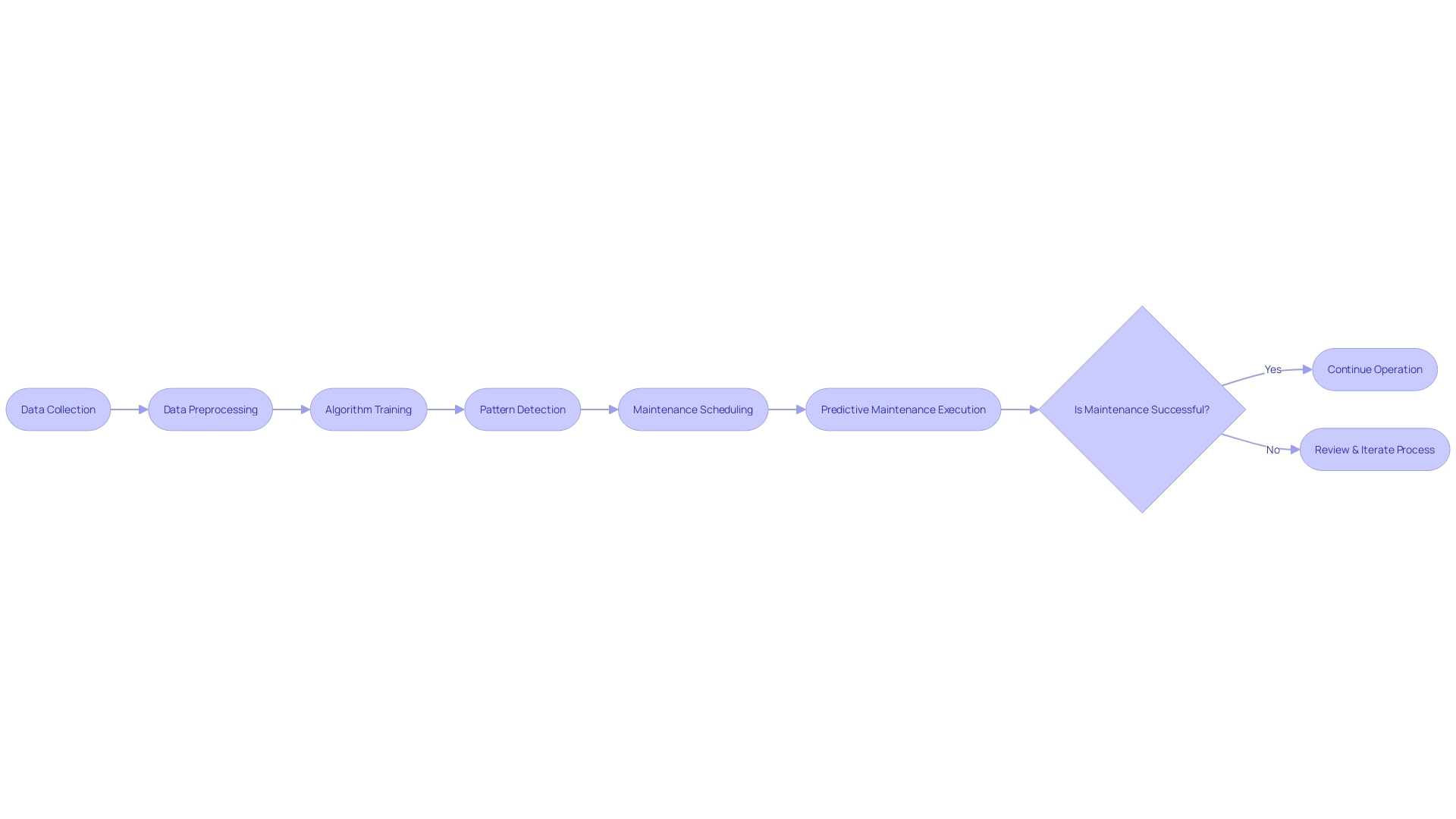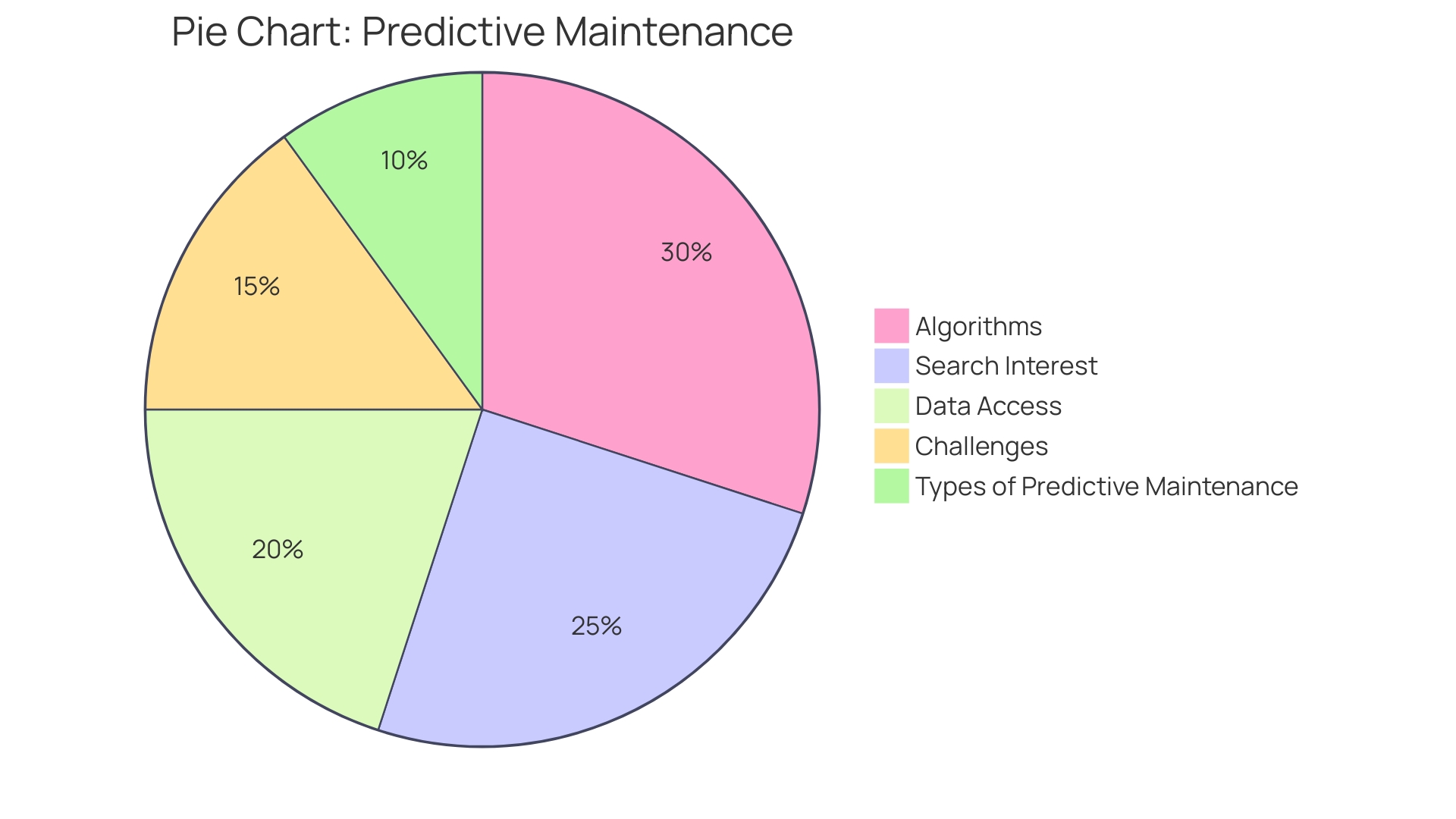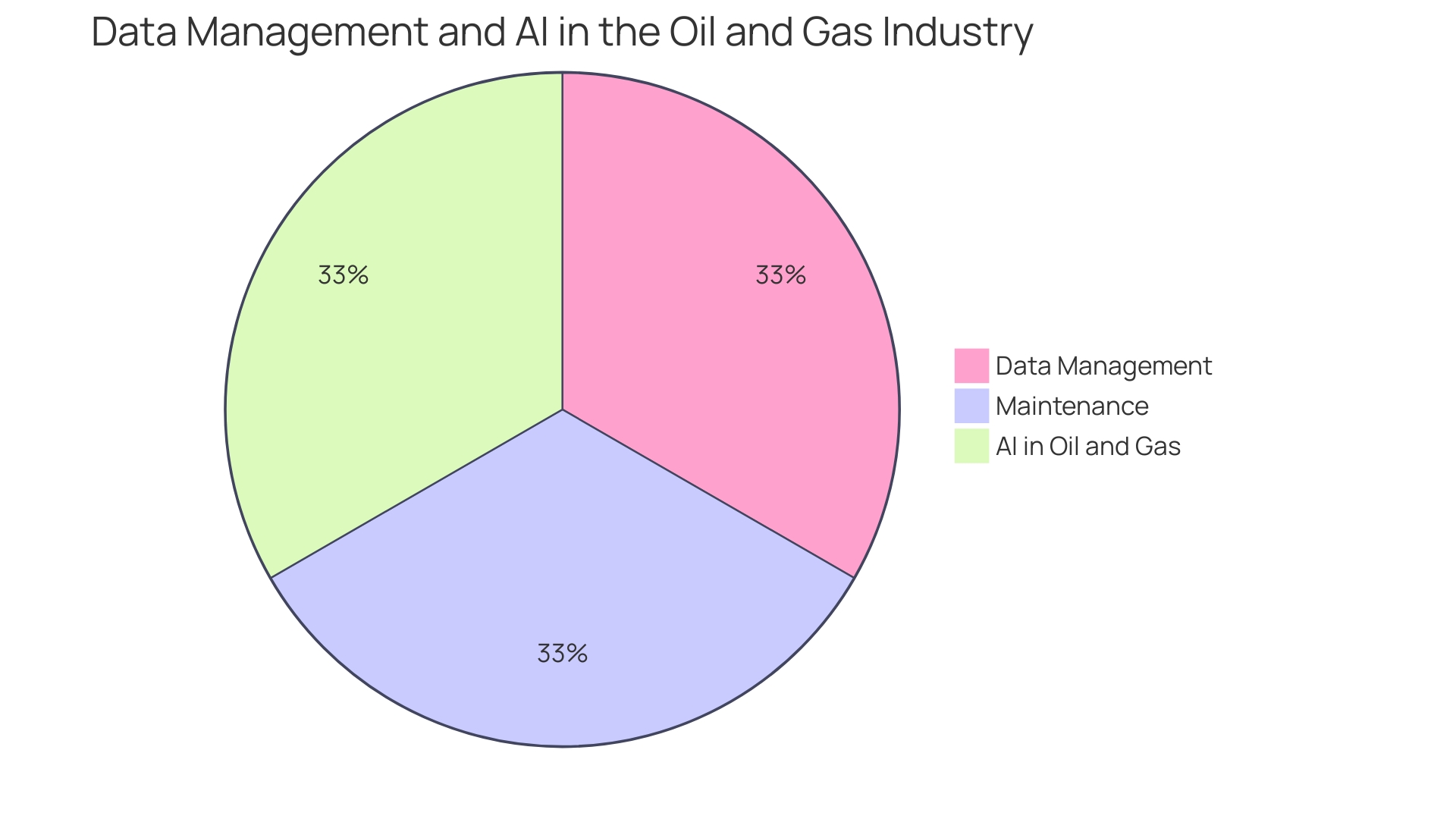Introduction
Artificial intelligence (AI) is transforming the field of predictive maintenance, revolutionizing how businesses approach equipment care. By integrating real-time monitoring, historical data analysis, and sophisticated algorithms, AI goes beyond traditional methods to anticipate maintenance needs and prevent costly failures and interruptions. Industry experts, like Vladimir and Mattias, leverage their expertise in machine learning and IT to enhance predictive maintenance and create robust AI systems capable of analyzing vast amounts of data.
The market for predictive maintenance is rapidly growing, reflecting the recognition of its value in industries like automotive, where precision and uptime are critical. With AI-driven tools and asset management systems, maintenance teams can monitor equipment parameters and intervene before breakdowns occur, minimizing downtime and optimizing decision-making. However, the implementation of AI in predictive maintenance comes with challenges, such as acquiring and maintaining quality data and overcoming technological and cultural barriers.
Organizations must invest in training, change management, and cross-functional collaboration to fully leverage the benefits of AI in predictive maintenance. Despite the challenges, the strategic integration of AI-driven predictive maintenance promises substantial improvements in organizational efficiency, safety, and asset integrity. As AI continues to evolve and merge with technologies like the Internet of Things (IoT) and digital twins, the future of predictive maintenance holds even greater potential for operational excellence and cost optimization.
Understanding Predictive Maintenance
Harnessing the power of AI in predictive maintenance is transforming how we approach equipment care. This advanced strategy goes beyond traditional methods by integrating real-time monitoring, historical data analysis, and sophisticated algorithms. The goal is to anticipate maintenance needs, ensuring that equipment is serviced just in time to avert failures and costly interruptions to operations.
Experts like Vladimir, with a robust background in electronic design automation and AI, enhance predictive maintenance by amalgamating machine learning and domain knowledge. This synergy allows for the creation of robust AI systems capable of analyzing vast amounts of data to identify patterns predictive of equipment failure. Such expertise has propelled companies like Luxoft to the forefront of AI-driven solutions in industries like automotive, where precision and uptime are critical.
Mattias, with his extensive IT experience, understands the significance of data in crafting effective AI solutions. For AI to be impactful in predictive maintenance, it requires a constant stream of quality data—information on machines' performance, deviations from the norm, and their role within the production line. The algorithms, which are at the heart of machine learning, evolve over time by learning from this data, thereby enhancing their predictive capabilities.
The rise in online searches for predictive maintenance signals an expanding interest and recognition of its value. As reported, the market for predictive maintenance was valued at $5.5 billion in 2022, reflecting the business world's acknowledgment of its importance. Companies like Novelty are at the forefront, leveraging AI through platforms like TruPrognostics to accurately forecast maintenance needs, addressing the trillion-dollar issue of unplanned downtime in manufacturing.
A maintenance team's arsenal now includes predictive tools and asset management systems to monitor and predict equipment failures. Imagine a crucial pump in a production line; is unexpected failure could halt operations for hours. Predictive maintenance tools can monitor its temperature and other vital parameters to signal the need for maintenance before a breakdown occurs.
AI's role in predictive maintenance is also underscored by the need for high-quality, relevant data sets for AI models to be reliable. As emphasized by industry leaders, the foundation of Ai's transformative potential in sectors like oil and gas hinges on this data quality. With more than 92% of companies in this sector investing or planning to invest in AI, the emphasis on data integrity is paramount to reap operational efficiencies and cost reductions.
Organizations benefit from predictive maintenance by minimizing downtime and enhancing decision-making. It's a continuous cycle of data collection, machine learning, and iterative improvements, all aimed at maintaining equipment integrity and functionality, pivotal to asset management. Tools like InfluxDB are developed specifically for storing and analyzing the time-series data that predictive maintenance relies on, representing the future of machine care in an AI-driven world.
Key AI Technologies in Predictive Maintenance
Artificial intelligence has become a cornerstone in advancing predictive maintenance, revolutionizing the way companies approach equipment care. At the heart of this transformation is machine learning, a subset of AI that processes and learns from data without explicit programming. By leveraging machine learning, businesses can sift through time series data—a sequence of data points indexed in time order—to detect patterns and anticipate failures before they occur.
Machine learning's predictive capabilities are powered by algorithms that evolve through continuous learning, allowing them to distinguish between critical signals and irrelevant noise in vast datasets. This distinction is crucial in environments like manufacturing, where precise machine performance data is paramount. The predictive maintenance market, currently valued at $5.5 billion as of 2022, demonstrates the growing reliance on these AI-driven strategies.
Deep learning, natural language processing, and computer vision further augment machine learning by enabling nuanced pattern recognition across various data types, from numerical time series to unstructured text and images. The insights gained from this comprehensive analysis not only prevent costly downtimes but also refine maintenance schedules and enhance efficiency.
Organizations are increasingly recognizing the value of AI in predictive maintenance, with a study revealing that 6.1% of Canadian businesses employed AI to improve goods production. The use of AI transcends industries, from healthcare analytics to customer service automation, signifying its integral role in modern business operations. As AI continues to evolve, it empowers companies to maintain a proactive stance on equipment maintenance, ensuring reliability and optimizing performance.

Case Study: Successful Implementation of AI in Predictive Maintenance
Harnessing the power of AI, a manufacturing entity revolutionized their maintenance approach, transitioning from reactive to predictive maintenance. This strategic shift involved the integration of machine learning algorithms and a robust data management system, which combined historical data with real-time operational metrics. By doing so, the company achieved a more granular understanding of their machinery's health across various locations, enabling them to preemptively identify and address potential failures.
Consequently, this led to a drastic decline in unexpected downtimes, an enhancement in equipment longevity, and a tangible reduction in maintenance expenses. Such advancements underscore the transformative impact of AI in predictive maintenance, asserting its role as a cornerstone of Industry 4.0 and a testament to digital transformation in manufacturing.

Benefits of AI-Driven Predictive Maintenance
Harnessing the power of AI in predictive maintenance translates into tangible enhancements in organizational efficiency. By analyzing historical and real-time data, AI algorithms can identify patterns that indicate potential equipment failures before they occur. This predictive capability is instrumental in orchestrating timely maintenance interventions, thereby bolstering uptime and enhancing productivity.
Furthermore, AI enables the fine-tuning of maintenance schedules, ensuring that resources are allocated judiciously and maintenance is conducted only when necessary—optimizing costs and reducing superfluous activities. The strategic use of AI in maintenance not only extends the service life of equipment by preemptively rectifying issues but also fortifies safety protocols by averting potential breakdowns that could lead to accidents or injuries.
AI's role in predictive maintenance is underscored by its reliance on high-caliber data and sophisticated machine learning algorithms. These algorithms, which learn and improve over time, rely on comprehensive, accurate, and consistent data to make reliable predictions. This iterative learning from data patterns enhances the performance of predictive maintenance tasks.
As quoted from the May/June 2024 issue of Inspectioneering Journal, "It involves the use of data and iterative learning processes to automatically improve performance on a specific task." This underlines the importance of effective data management, which involves organizing vast amounts of data generated daily by facilities in a manner that's retrievable and actionable.
As industry professionals like Vladimir, with a Ph.D. in Electronic Design Automation, and Mattias, with 20 years of IT experience, advocate for the integration of AI in various sectors, it becomes clear that the benefits extend beyond maintenance. A survey by Ernst & Young highlighted that over 92% of oil and gas companies are either investing in AI or planning to do so within two years, indicating a broader trend towards digital transformation. This aligns with the insights from Automation.com, which emphasized the importance of staying current with technological shifts, particularly in AI and machine learning, to leverage these tools for operational excellence.
In essence, the strategic implementation of AI-driven predictive maintenance is a game-changer, offering a proactive approach to equipment management that promises not only cost savings but also a significant boost in safety and efficiency.
Challenges and Limitations
The integration of AI in predictive maintenance is transforming the way businesses manage their assets, offering a proactive approach to maintenance that promises increased efficiency and reduced downtime. However, it's not without its challenges. A primary concern for many organizations is the acquisition and maintenance of large volumes of quality data.
AI algorithms depend on rich historical and real-time data to accurately predict potential failures. Ensuring this data is both accessible and of high quality is a hurdle that must be overcome for successful AI implementation.
In addition to data concerns, the complexity of AI systems themselves can pose a significant barrier. They require not just a technological overhaul but also a cultural shift within the organization. Employees may be resistant to adopting AI solutions, wary of their implications or skeptical of their effectiveness.
Moreover, there is a pressing need for expertise in both the technical and business aspects of AI, as evidenced by professionals like Vladimir, who holds a Ph.D. in Electronic Design Automation and an MBA, bringing a blend of technical acuity and strategic insight to the field.
The predictive maintenance market, valued at $5.5 billion as of 2022, is witnessing a surge in interest, indicating a growing recognition of its potential. As organizations such as Professional Software Associates Inc. recognize the critical nature of predictive maintenance in sectors like railway infrastructure, the importance of embracing this technology becomes increasingly apparent.
To navigate these challenges, companies must invest in training and change management strategies. They should tap into the expertise of specialists who have navigated IT challenges in large enterprises, like Mattias with his 20 years of experience, to integrate AI smoothly into their maintenance processes. It's about building a foundation that includes a clear vision, an understanding of current processes, and the capability to integrate advanced tools like machine learning algorithms and time series data analysis into everyday operations.
The journey to implementing AI-driven predictive maintenance is complex, but with careful planning, the right expertise, and an openness to change, the benefits—ranging from enhanced asset integrity to improved decision-making—can be substantial.
Best Practices for Implementing AI in Predictive Maintenance
Optimizing the maintenance process through artificial intelligence (AI) requires a blend of strategic planning and technological integration. Identifying the most critical assets is the starting point, guiding organizations to prioritize their predictive maintenance efforts effectively. The key to this lies in the quality and availability of data, which necessitates integrating various data sources and establishing meticulous data cleaning and validation protocols.
The right AI technologies and tools must be selected to meet the unique needs and objectives of each organization. This decision is pivotal, as the efficacy of predictive maintenance strategies hinges on the capabilities of the chosen AI solutions. To facilitate this, organizations benefit from assembling cross-functional teams that unite domain experts, data scientists, and maintenance professionals, fostering a collaborative environment to develop and refine predictive maintenance approaches.
Continuous monitoring and iterative evaluation of AI-driven predictive maintenance systems are crucial. This allows for the identification of areas that require adjustments and enhancements, ensuring the system's ongoing effectiveness.
Real-world applications and research underscore the significance of these practices. For instance, as detailed in Inspectioneering Journal, the immense volumes of data generated daily in facilities underscore the importance of robust data management. Similarly, case studies like Luxoft's integration of automotive domain expertise with machine learning emphasize the value of cross-disciplinary collaboration.
Moreover, statistics reveal the industry's increasing reliance on AI, with over 92% of oil and gas companies either investing or planning to invest in AI technologies within the next two years. This trend illustrates the critical role of AI in driving operational efficiency and cost optimization within predictive maintenance frameworks.
Adopting AI in predictive maintenance is not without its challenges, as data quality and expertise are in high demand, and implementation costs can be substantial. However, the potential benefits, including enhanced decision-making and sustainable operations, provide compelling reasons for organizations to navigate these hurdles and embrace Ai's transformative power in maintenance strategies.
Future Trends and Evolution of AI in Predictive Maintenance
The advancement of artificial intelligence (AI) is a game-changer in the realm of predictive maintenance. We are on the brink of a new era where Ai's capabilities will be significantly enhanced by the power of machine learning and extensive data analysis. Ai's integration with the Internet of Things (IoT) is set to transform real-time equipment monitoring, paving the way for more proactive maintenance approaches.
Digital twins, powered by AI, are emerging as crucial tools. These virtual replicas can simulate physical assets, enabling organizations to anticipate failures and plan maintenance more effectively. With the ability to analyze massive volumes of data, AI will contribute to an increase in operational efficiency and a reduction in costs, taking equipment effectiveness to new heights.
Experts like Vladimir, with his deep knowledge in AI and machine learning, emphasize the necessity of high-quality data sets for training and validating AI models, ensuring their accuracy and reliability. As noted in Inspectioneering Journal, managing the immense amounts of data generated daily is pivotal for maintenance and the protection of equipment functionality.
Recent innovations, such as the use of deep learning to detect defects in complex additively manufactured components, demonstrate the potential of AI to overcome challenges in quality control. Meanwhile, developments like the 'Large Language Model' for manufacturing robots, as developed by the Korea Institute of Machinery and Materials, illustrate the practical applications of AI in automating complex tasks.
Moreover, the use of time series data, which captures observations at regular intervals, is integral in various domains, including predictive maintenance. As machine learning algorithms learn from these data patterns, they continuously improve, leading to more precise predictions and actions.
The use of specialized tools like InfluxDB, which analyzes data from networked devices, further underscores the technological strides being made in predictive maintenance. As businesses increasingly recognize the benefits of predictive maintenance, they harness the power of machine intelligence to analyze vast data sets, ultimately enhancing their maintenance strategies and business outcomes.

Conclusion
The integration of AI in predictive maintenance is revolutionizing equipment care by anticipating maintenance needs and preventing failures. Industry experts leverage machine learning and IT to create robust AI systems that analyze vast data sets.
The market for predictive maintenance is rapidly growing, reflecting its value in critical industries like automotive. AI-driven tools and asset management systems enable proactive monitoring to minimize downtime and optimize decision-making.
However, implementing AI in predictive maintenance presents challenges, such as acquiring quality data and overcoming technological and cultural barriers. Organizations must invest in training, change management, and collaboration to fully leverage AI's benefits.
In conclusion, the strategic integration of AI in predictive maintenance offers a proactive approach to equipment management, resulting in cost savings, improved safety, and enhanced efficiency. By analyzing data, leveraging machine learning algorithms, and embracing technological advancements, organizations can optimize maintenance processes for operational excellence. AI is a game-changer in predictive maintenance, and organizations should embrace its transformative power to stay ahead in the industry.





